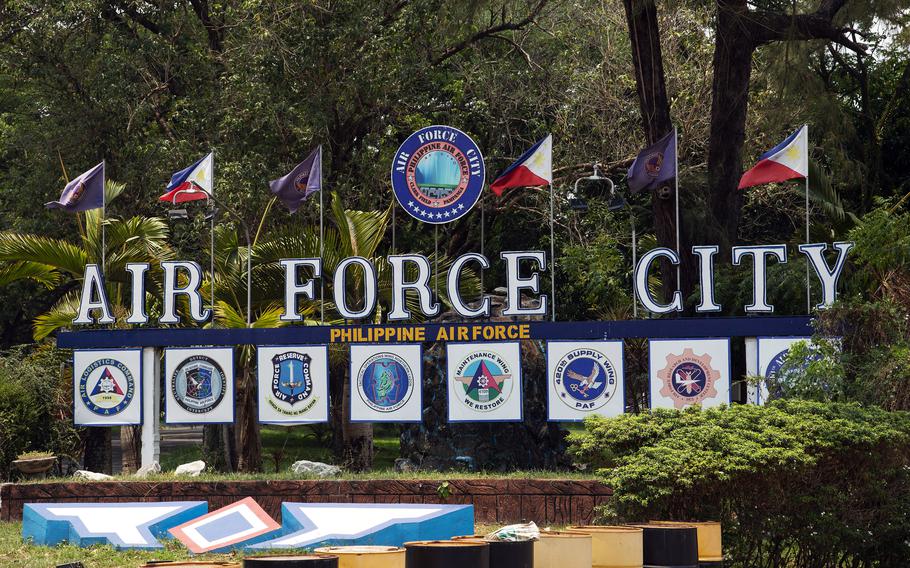
Clark Air Base, a former U.S. facility on the Philippines’ main island of Luzon, is hosting Cope Thunder fighter jet drills until May 12, 2023. (Jonathan Snyder/Stars and Stripes)
For the first time in more than 30 years, American and Filipino fighter pilots are flying together again in airpower drills that were among the largest in the Indo-Pacific during the Cold War.
Cope Thunder, which kicked off Monday and runs until May 12, includes 160 U.S. airmen and a dozen aircraft from the 35th Fighter Wing at Misawa Air Base, Japan, according to a Pacific Air Forces statement Friday. The wing flies F-16 Fighting Falcons.
“Cope Thunder Philippines is designed to provide bilateral fighter training with the Philippine Air Force,” the statement said.
The exercise at Clark Air Base, a former U.S. facility on the Philippines’ main island of Luzon, began in 1976 and was last held there in 1990, according to the statement.
Clark was badly damaged in the eruption of Mount Pinatubo in 1991 and U.S. forces left the following year.
Cope Thunder moved to Eielson Air Force Base, Alaska, in 1992, and was eventually renamed Red Flag Alaska.
Airpower exercises are also part of Balikatan, the annual, multi-service U.S.-Philippine training in the islands that ran from April 11 to Friday.
For Balikatan, the U.S. Air Force sent two MC-130J Commando II gunships, a pair of MQ-9 Reaper drones and 16 F-16C Fighting Falcons, Capt. Denise Guiao-Corpuz, a 15th Wing spokeswoman, said by email Monday.
In the 1970s and 1980s Cope Thunder involved up to 90 aircraft with as many as 60 in the air at the same time, retired Air Force Lt. Gen. Dan Leaf, who flew in 10 Cope Thunders, said by phone Monday from Hawaii.
“We were doing cutting-edge tactics,” said Leaf, from 2005 to 2008 the deputy commander of U.S. Pacific Command, now called Indo-Pacific Command.
Reactivating the drill signals that the U.S.-Philippine alliance, for all its ups and downs over more than a century, is back up, Leaf said.
“It demonstrates that the U.S. remains the preferred security partner in the Indo-Pacific,” he said. “China wishes that wasn’t the case.”
More evidence of a strengthening alliance was provided Friday by U.S. Pacific Fleet’s commander, Adm. Samuel Paparo, who told Japan’s Nikkei newspaper that the United States is ready to help the Philippines as China interferes with Manila's efforts to resupply a grounded warship in the South China Sea.
Beijing has "frequently interfered with those resupplies," something that’s "clearly unlawful," Paparo said. The Chinese coast guard on Sunday blocked a Philippine patrol vessel from reaching the BRP Sierra Madre in Ayungin Shoal, also known as Second Thomas Shoal, in the Spratly Islands, according to The Associated Press.
The World War II-era vessel, crewed by a small Philippine navy contingent, was intentionally grounded in 1999 to support Philippine territorial claims.
"We stand ready to come to the Philippines' assistance, in their exercise of their sovereign rights," Paparo told Nikkei.